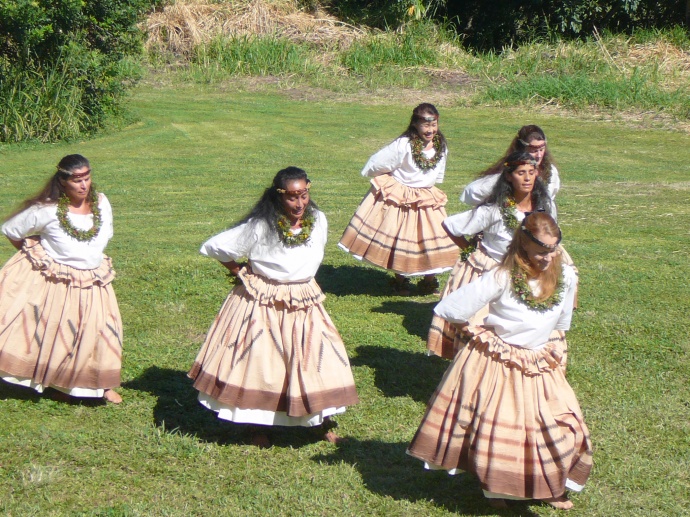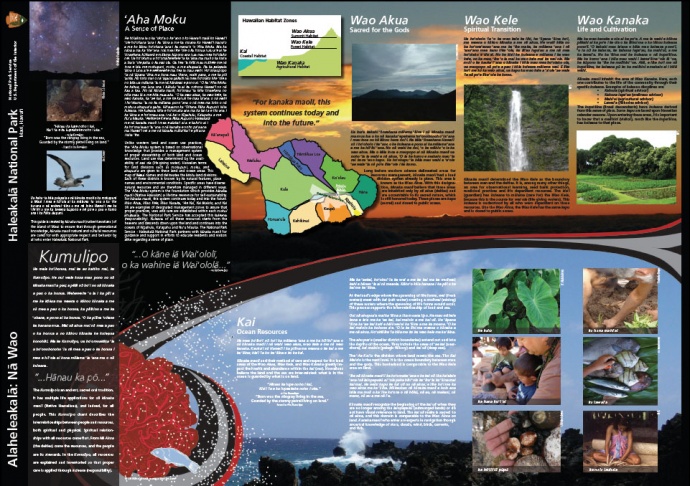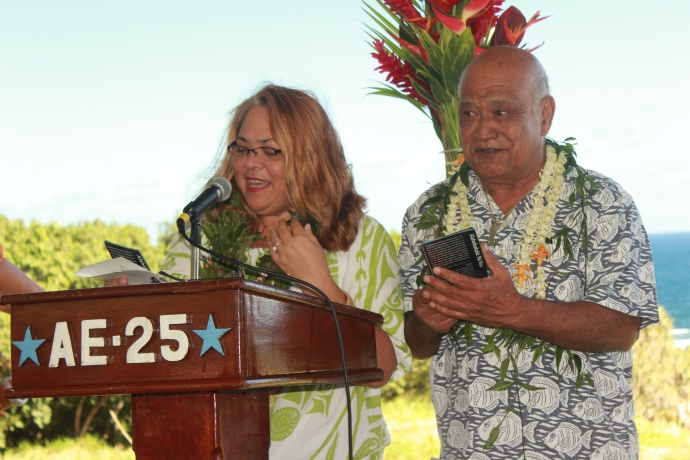Haleakalā National Park Unveils New Cultural Brochure
By Wendy Osher
Haleakalā National Park unveiled a new cultural brochure and celebrated the kūpuna who helped to author it, during a special event held this week in Kīpahulu.
“Some people might question why a national park would hold an event to celebrate the public roll out of a brochure, but this is no ordinary brochure and this is no ordinary place,” said superintendent Natalie Gates in an agency press release.
“No other brochure in the entire 401-unit national park system was written by community members in the native language of the community,” she said.
The event, entitled “Nānā I Ke Kumu,” or “Look to the Source,” was held on Wednesday, Dec. 4, and was a tribute to the elders in the community who served as a source of knowledge for the publication and the park service.
Among the kūpuna recognized at the event were: Sheila Roback, Nick Goodness, Uʻi Nahoʻolewa, the late Charlie Maxwell, Kiope Raymond, and Lyons Kapiʻi Naone.
Other contributors who spoke and performed at the event included: “Uncle Les” Kuloloio; kumu hula Gordean Bailey; Maʻano Smith, and Jeff Rasmussen.

Hula hālau Wehiwehi O Leilehua performed “Nene,” written by kumu Gordean Bailey, and “Kīpahulu,” performed to music by Jeff Rasmussen. Ma`ano Smith, another brochure author, also sang during and after the event. Photo courtesy Haleakalā NPS.
Park representatives say the contributing kūpuna donated more than 150 hours each of time to write, edit, and design the brochure. The NPS reportedly expects to hand out more than 1 million copies to visitors each year.
Kuloloio, who spoke on behalf of nā kūpuna, shared Hawaiian and English passages from the Kumulipo, a sacred and ancient chant–portions of which are included in the brochure.
“The passages highlight how closely the land and sea are interrelated and how it is the kuleana or responsibility,” of visitors and residents alike to care for the resources found there, park representatives said.
Other brochure highlights include information on safety, driving, weather, hiking, swimming, plants and animals, activities, and cultural and natural resources.
US Senator Mazie Hirono, who spoke at the event as part of her visit this week to Maui and Molokaʻi, said, “Our national parks are not museums or places where culture is only discussed in the past tense.”
“The Hawaiian culture and the people who practice it are very much alive. Native Hawaiians come to Haleakalā to renew ties to their ancestors as well as to pass ancient traditions down to the next generation,” she said.











